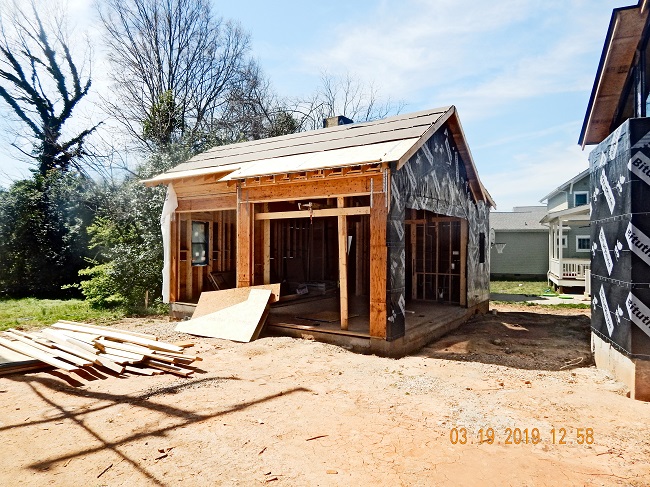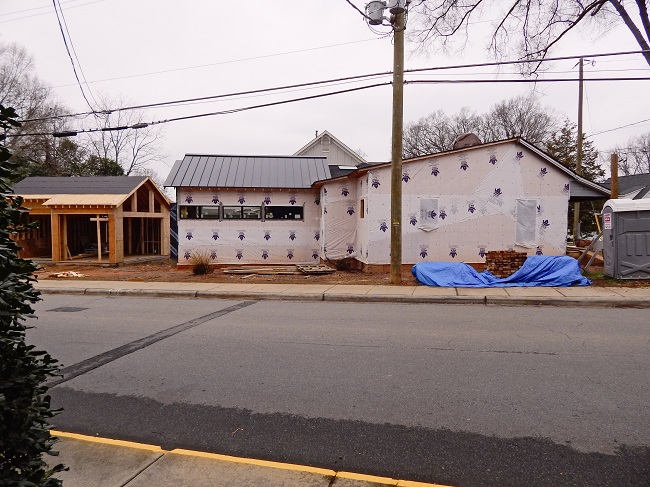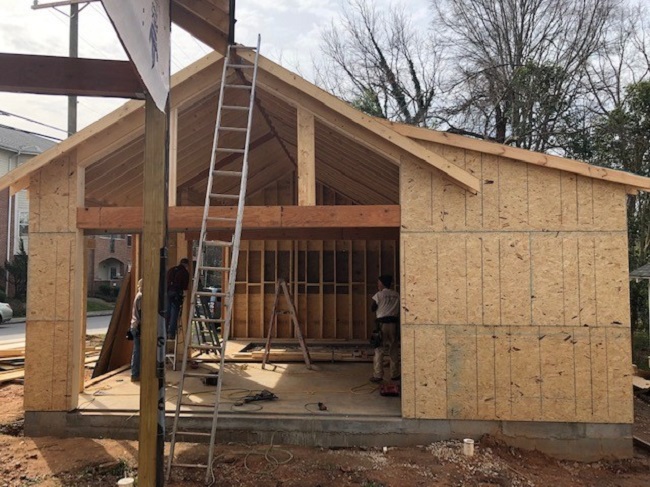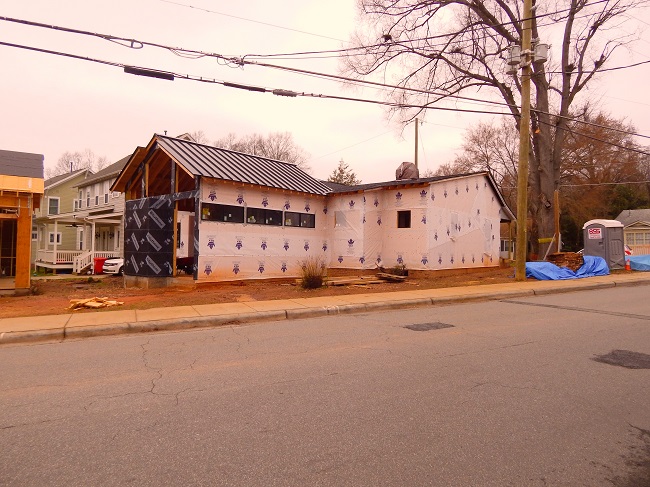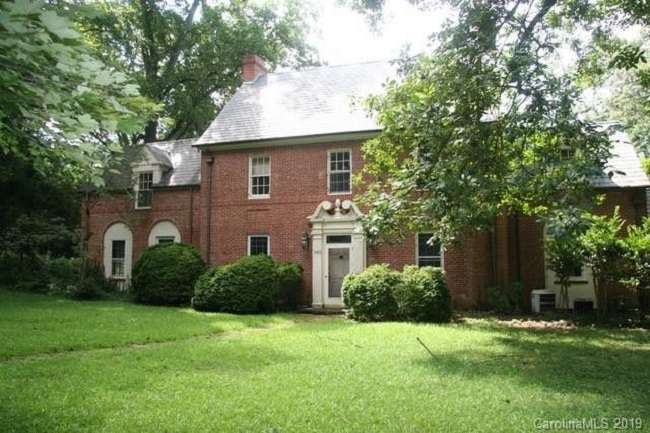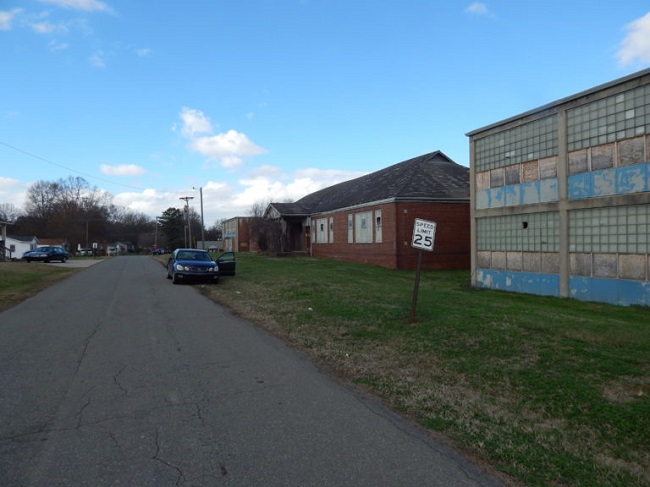April 24, 2019 – 8:00 a.m.
1. Chair’s Report: Garrett Nelson
2. Director’s Report: Dan Morrill
3. Senior Preservation Planner’s Report: Stewart Gray
4. American Legion Memorial Stadium, 310 N. Kings Drive, Charlotte, N.C.
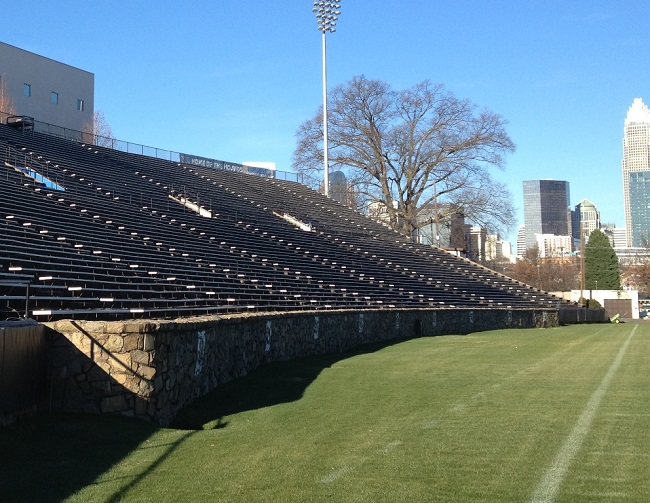
American Legion Memorial Stadium
Design Update for American Legion Memorial Stadium
The applicant is presenting an update on the proposed renovation of the stadium.
Below is the motion that was passed by the Historic Landmarks Commission at its December 2018 meeting:
THE DESIGN REVIEW COMMITTEE PRESENTED A SECONDED MOTION TO RECOMMEND TO THE HISTORIC LANDMARKS COMMISSION THAT IT APPROVE THE PLAN FOR THE AMERICAN LEGION MEMORIAL STADIUM, 1300 BLOCK OF CHARLOTTETOWNE AVENUE, CHARLOTTE, N.C., AS PRESENTED WITH THE FOLLOWING CONDITIONS: 1) ARTIFICIAL STONE WILL NOT BE ALLOWED ON THE FIELD-LEVEL WALL; 2) THE FIELD-LEVEL WALL WILL BE CONSTRUCTED IN A CURVILINEAR FASHION; 3) FINAL DESIGN FOR ALL ARCHITECTURAL ELEMENTS WILL BE PRESENTED FOR REVIEW BY THE DESIGN REVIEW COMMITTEE; 4) THE TICKET BOOTH ROOFS WILL REPLICATE THE ORIGINAL DESIGNS.
MS. HOOVER PRESENTED A MOTION SECONDED BY MR. NORMAN THAT THE HISTORIC LANDMARKS COMMISSION AMEND THE MOTION FOR THE AMERICAN LEGION MEMORIAL STADIUM, 1300 BLOCK OF CHARLOTTETOWNE AVENUE, CHARLOTTE, N.C., TO STIPULATE THAT THE ENTIRE FIELD-LEVEL WALL BE BUILT OF STONE. THE COMMISSION UNANIMOUSLY APPROVED THE AMENDMENT.
THE COMMISSION UNANIMOUSLY APPROVED THE SECONDED MOTION AS AMENDED.
Staff recommends that the proposed new windows in the ticket booths not be allowed. This is based on Standard #3.
5. First National Bank Building, 110 and 112 South Tryon Street, Charlotte, N.C.
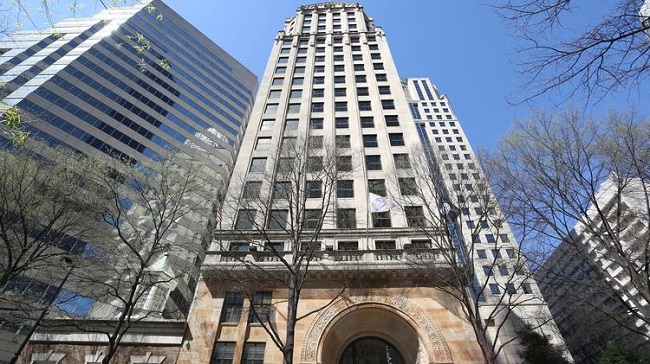
First National Bank Building
The applicant is presenting revised plans for new windows opening onto Polk Place Park.
Below is the motion that was passed by the Historic Landmarks Commission at its April 2019 meeting:
THE DESIGN REVIEW COMMITTEE PRESENTED A SECONDED MOTION TO THE HISTORIC LANDMARKS COMMISSION THAT IT CONCEPTUALLY APPROVE THE GLAZED OPENINGS ALONG THE WALL FOR THE FIRST NATIONAL BANK BUILDING, 110 AND 112 SOUTH TRYON STREET, CHARLOTTE, N.C., WITH THE CONDITION THAT REFINED PLANS WILL BE RESUBMITTED TO THE COMMITTEE FOR FURTHER REVIEW. THE COMMISSION APPROVED THE MOTION WITH MR. EGAN VOTING IN OPPOSITION.
Staff recommends that the proposed new windows and sills should match the existing windows on the north elevation. This is based on Standard #9.
6. George Stephens House, 821 Harvard Place, Charlotte, N.C.
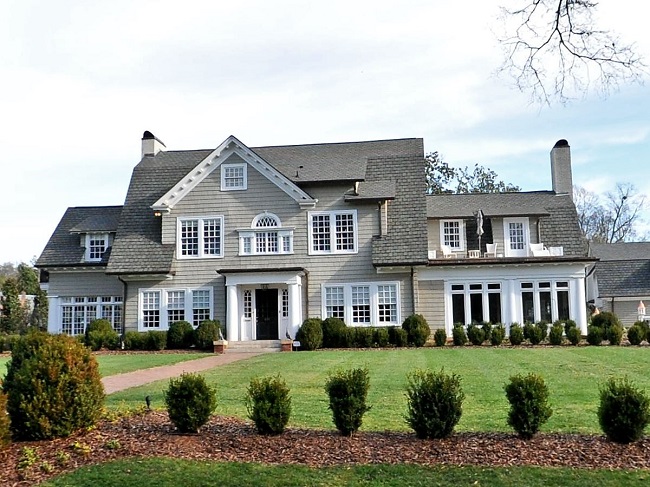
George Stephens House
The applicant is proposing a deck addition on the rear of the house.
Staff recommends that the proposed deck addition should step-back from the side elevation and that the pergola should not project past the side elevation. This is based on Standard #9.
7. Old Business
8. New Business
Standards for Rehabilitation
The Standards will be applied taking into consideration the economic and technical feasibility of each project.
- A property will be used as it was historically or be given a new use that requires minimal change to its distinctive materials, features, spaces and spatial relationships.
- The historic character of a property will be retained and preserved. The removal of distinctive materials or alteration of features, spaces and spatial relationships that characterize a property will be avoided.
- Each property will be recognized as a physical record of its time, place and use. Changes that create a false sense of historical development, such as adding conjectural features or elements from other historic properties, will not be undertaken.
- Changes to a property that have acquired historic significance in their own right will be retained and preserved.
- Distinctive materials, features, finishes and construction techniques or examples of craftsmanship that characterize a property will be preserved.
- Deteriorated historic features will be repaired rather than replaced. Where the severity of deterioration requires replacement of a distinctive feature, the new feature will match the old in design, color, texture and, where possible, materials. Replacement of missing features will be substantiated by documentary and physical evidence.
- Chemical or physical treatments, if appropriate, will be undertaken using the gentlest means possible. Treatments that cause damage to historic materials will not be used.
- Archaeological resources will be protected and preserved in place. If such resources must be disturbed, mitigation measures will be undertaken.
- New additions, exterior alterations or related new construction will not destroy historic materials, features and spatial relationships that characterize the property. The new work will be differentiated from the old and will be compatible with the historic materials, features, size, scale and proportion, and massing to protect the integrity of the property and its environment.
- New additions and adjacent or related new construction will be undertaken in such a manner that, if removed in the future, the essential form and integrity of the historic property and its environment would be unimpaired.


